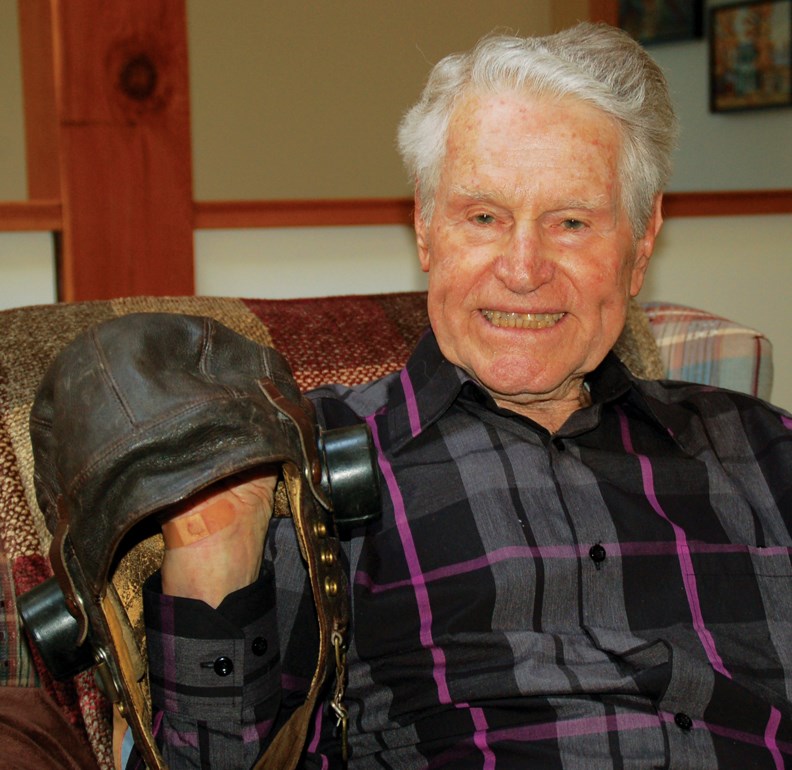On the 72nd anniversary of D-Day, June 6, Royal Air Force (RAF) Bomber Command veteran Bill Hamill of Gibsons turned his thoughts to a time he rarely recalls because it holds some hard memories.
“I just block it out of my mind,” the 92-year-old veteran said.
“More lately I’m talking about it and telling people what happened, but we lost so many guys … a lot of young guys were killed. It was terrible. I was very fortunate.”
Hamill was a member of the No. 115 Squadron, which suffered the most casualties of any of the squadrons in RAF Bomber Command. Of 288 planes, 132 were lost.
Hamill served as an air gunner, manning a Browning .303 Mark II machine gun in the upper centre of the bomber, between the cockpit and the tail.
The position gave him a 360-degree view of the fighting and he was involved in more than 30 missions over Germany and France, including a bombing mission to Normandy on June 6, 1944, D-Day.
Hamill had signed up with the RAF in 1942 at the age of 19. He was just 20 years old when he took part in the Allied invasion of Normandy.
It was the largest seaborne invasion in history and was preceded by extensive aerial assault.
Hamill set out that day at 6:10 a.m. on a mission to take out some artillery that could have proved troublesome for the Allied forces.
“We bombed, I’m going to say Caen [lower Normandy], but it was a gun emplacement near Caen and I forget what the name of it was now, but that was some morning,” Hamill said.
“The English Channel was just full of ships – the warships, crew carriers and everything else. So we went in and bombed and when we came out the sun was coming up and I thought it was a big fire, but it illuminated all these ships on the water and it was awesome.”
He said his D-Day flight ended up being “an easy trip.”
“Because we had about [6,000] or 8,000 aircraft in the air and the Germans hardly showed up in the air,” Hamill said.
“We had flak, mind you, but nothing that was serious.”
Hamill had several close calls while serving as an air gunner before he finished his tour with the RAF in July 1944.
His first mission was as a spare on a crew he didn’t train with on a bomber being flown by a green pilot.
“I saw four heavies shot down that night and when we were dog-legging it out I had a blip in my earphones … It warns you of an enemy aircraft in your area,” Hamill said.
“So I see a Ju-88 [combat plane] coming up at us so I called for a corkscrew [manoeuvre], and we got back all right.”
A few days later, that crew Hamill had served with didn’t make it back from a mission.
“You never knew one trip to the next whether you were going to get it or not,” Hamill said, noting he lost many good friends who served in the air force and the army.
“I had a guardian angel. I believe that.”
After leaving the RAF in 1944, Hamill went back to work with the railway, a profession he had started at the age of 17 and put on hold to serve in the air force.
He worked his way up the ranks with the railway until 1983, when he retired after 43 years of service.
He married and had three children – Larry, Bob and Mary Lou – and now lives in Gibsons with his daughter.



